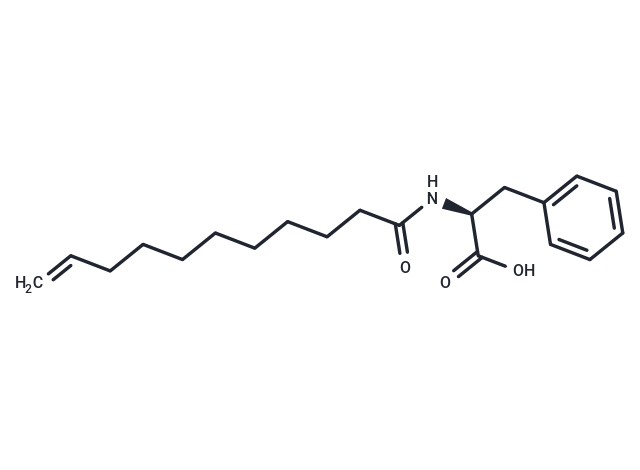Shopping Cart
Remove All Your shopping cart is currently empty
Your shopping cart is currently empty
Undecylenoyl phenylalanine (Sepiwhite msh QD) is a novel depigmenting agent, which possibly acts as an alpha-melanocyte-stimulating hormone antagonist, thus inhibiting melaninogenesis.

| Pack Size | Price | USA Warehouse | Global Warehouse | Quantity |
|---|---|---|---|---|
| 1 g | $29 | In Stock | In Stock | |
| 1 mL x 10 mM (in DMSO) | $29 | In Stock | In Stock |
| Description | Undecylenoyl phenylalanine (Sepiwhite msh QD) is a novel depigmenting agent, which possibly acts as an alpha-melanocyte-stimulating hormone antagonist, thus inhibiting melaninogenesis. |
| Synonyms | Undecylenoylphenylalanine, Sepiwhite msh QD |
| Molecular Weight | 331.45 |
| Formula | C20H29NO3 |
| Cas No. | 175357-18-3 |
| Smiles | C([C@H](NC(CCCCCCCCC=C)=O)C(O)=O)C1=CC=CC=C1 |
| Relative Density. | 1.047 g/cm3 (Predicted) |
| Color | White |
| Appearance | Solid |
| Storage | Powder: -20°C for 3 years | In solvent: -80°C for 1 year | Shipping with blue ice/Shipping at ambient temperature. | |||||||||||||||||||||||||||||||||||
| Solubility Information | DMSO: 60 mg/mL (181.02 mM), Sonication is recommended. | |||||||||||||||||||||||||||||||||||
Solution Preparation Table | ||||||||||||||||||||||||||||||||||||
DMSO
| ||||||||||||||||||||||||||||||||||||
| Size | Quantity | Unit Price | Amount | Operation |
|---|

Copyright © 2015-2026 TargetMol Chemicals Inc. All Rights Reserved.